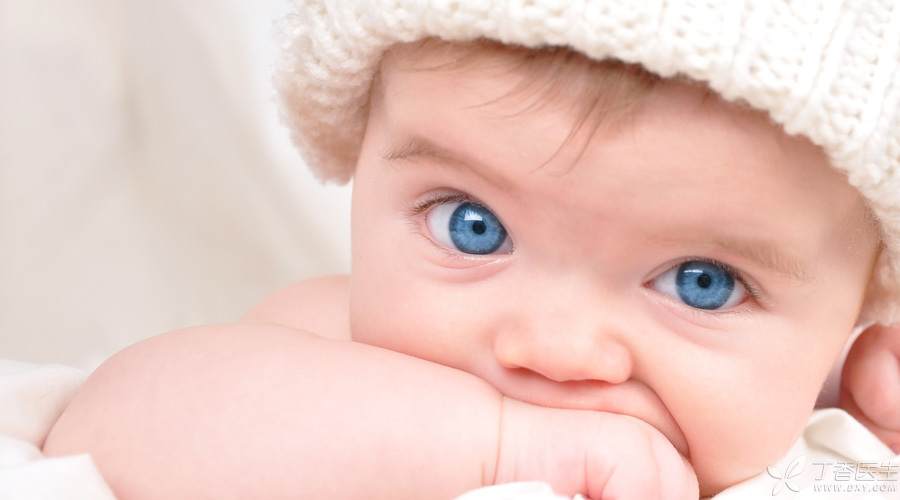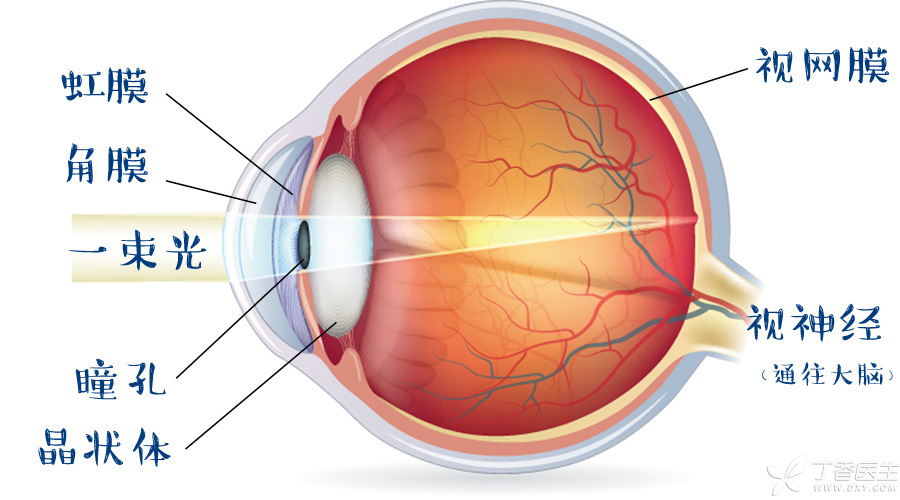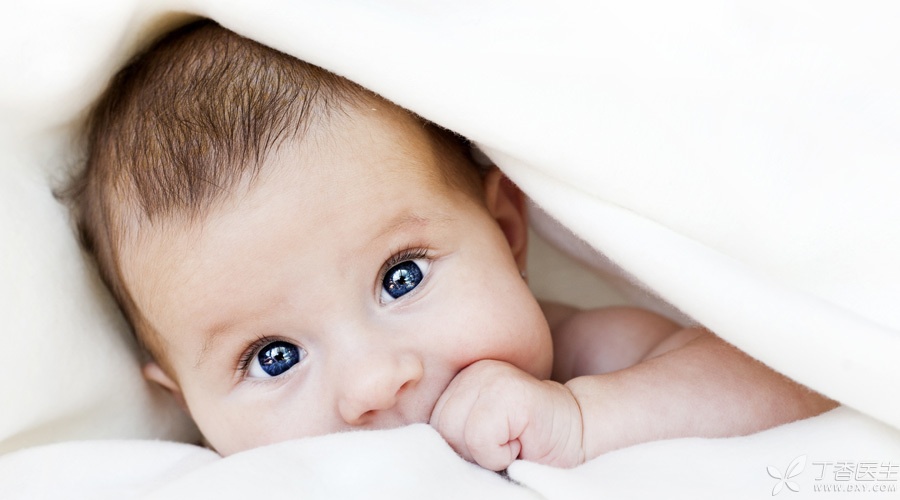
Most of us, open our eyes, can see this colorful world.
People often say that the eyes are the windows of the soul. Vision is the higher feeling of human beings. It is not only a simple view, but also includes many complicated functions such as distance, three-dimensional, shade, color, etc.
Huh? Are we what how saw?
Our vision system is very similar to the imaging principle of cameras.

External objects refract light, which passes through the eyeball and shines on the retina.
The retina is equivalent to the [negative] in the camera, where an image is formed. The optic nerve on the retina transmits the electrical signals of the [negative] image to the visual cortex of the brain, and we [see] the world.
How old is the baby?
For people with eyesight, more than 80% of external information needs to be obtained through [looking].
Vision is so important, but it is the latest mature of many senses. How did this sensory system, which is so important for exploring the world, develop from scratch?
First, let’s look at several key points in the eye development when the baby is in the belly. It can let us roughly see the outline of the answer.
1. Pregnant for 3 ~ 4 weeks
When the embryo is only the size of a bean, the embryonic form of the [eye] has already begun to appear.
2. About 8 weeks pregnant
At this time, the eye structure has just been formed and the eye function has begun to develop, but the baby’s upper and lower eyelids have not yet been separated.
3. About 27 weeks pregnant
At this time, the baby began to open his eyes and blink, but most of the time, the baby floated in amniotic fluid with his eyes closed.
By the end of the 6th month, the fetus was already able to respond to light.
Their pupils can be enlarged and reduced according to the intensity of light to protect their eyes from strong light.
Some parents-to-be may say: Since the light can be [seen], can the “visual prenatal education” that makes people obsessed with begin?
Not to mention whether [light prenatal education] is scientific and effective, the fetus can and can only [see] the strong light from the outside world at this time. The light of [visual prenatal education] is like the red light seen in the palm after holding a flashlight against the back of the hand.
At this stage, the baby’s eyesight is still blurred and he cannot accurately distinguish the form and color of external things. Therefore, [visual prenatal education] seems to have no place to exert its power.
The development and perfection of the visual system runs through the whole fetal period and infancy. Therefore, there are several key time points after the baby is born.
4. 2 months of birth
At this time, the baby can easily look at things close to his/her eyes-for example, within the range of 30 ~ 40cm.
5. 3 months of birth
By this time, the baby has been able to track down the moving objects, and his eyes and small head have moved with the moving objects.
6. 5 months of birth
From this time on, the baby already has [depth perception] when looking at things, has awareness of [height], and will be afraid when at high places, such as bedside.
Moreover, by this time, the baby has been able to distinguish colors well.
What babies actually prefer to watch is…
1. Face
The newborn babies are also the “face-watching” group. Compared with other objects, the babies are more interested in faces.
Hey hey hey, although what they can see at this time is… slightly mosaic faces.
2. Nearby objects
The newborn baby is actually a [farsighted eye] with a narrow vision and few things to see and see clearly.
Accustomed to the environment and visual field distance in the uterus, infants of this age group can only see things within 30 ~ 40 cm in front of them.
3. High color saturation
You may not know the truth: babies of 0-4 months old can almost only distinguish black and white [color blindness].
After 4 months, the baby’s visual system developed rapidly and gradually became able to distinguish more colors, preferring basic colors such as red, yellow, blue and green with higher saturation.
These colors are [black] even for babies living in the black-and-white world, rather than transitional [gray], which can attract the attention of babies.

What can parents do to promote the baby’s visual development?
There is no denying that a pair of sensitive and sharp eyes are sharp tools for babies to feel the world and know the world.
As the baby’s first teacher, what [assists] moves can parents have in the baby’s visual development?
1. Make use of the feeling of light to establish the regular work and rest of the fetus.
Many expectant mothers pay attention to [visual prenatal education] and hope to promote the brain development of their babies, which is a particularly good starting point.
However, the strong light of the flashlight, on the one hand, may disturb the baby’s sleep, on the other hand, may also cause damage to the visual system. Therefore, hearsay that a random flashlight on the belly may provoke the baby who is resting to rage.
What is more troublesome is that if the operation is not proper, the damage to the visual system will do more harm than good.
Is there no place for [light prenatal education]? The answer is no.
As a expectant mother, you can help your baby set up a schedule like this:
Wake up in the morning and open the curtains to reveal your belly. Let the baby’s palace be bathed in the morning sunshine, and then tell the baby: good morning, baby, the new day is about to begin.
Before going to bed at night, tell a little story to the baby in your belly, and then say to him/her: Baby, we are going to bed, good night, see you tomorrow! Then cover your belly with clothes or quilts.
Using the visual stimulation of this light, the regular work and rest of the baby can be established. Especially in the third trimester of pregnancy, the baby can already form its own biological clock according to the changes of external light and the mother’s work and rest habits.
In the long run, what wakes expectant mothers every day will no longer be alarm clocks or dreams, but the baby’s love [morning call].
2. Grasp ways to stimulate visual development
After the baby is born, the general guideline of Bao’s parents is: for babies of different ages, visual stimulation training activities suitable for the current age should be adopted.
(1) Change the angle
At the stage when the baby cannot change his posture by himself, he should change the orientation of the crib from time to time so that the baby can know their small room from different angles, and also let the light outside the window come from different directions, so that the baby will not keep staring at a certain direction.
(2) Changing the environment
On the premise of keeping some toys familiar to the baby, the hanging toys and pendants can be replaced frequently. You can try to observe the length of time the baby looks at the pendants. When the time they look at the pendants becomes shorter and shorter, they can replace them.
(3) Color and shape should be rich
Use some toys with bright colors and strong contrast to amuse the baby. Geometric shapes can also be more, such as round, square, triangular, long, etc. About one year old, the baby can clearly distinguish different shapes.
(4) Encourage crawling
Crawling is an activity that requires the coordination of eyes and limbs. After the baby starts to learn to crawl, the baby should be encouraged to crawl more to make room for safe and clean space for the baby to crawl.
In crawling, the baby can better practice the coordination and exploration between limbs and eyes, which is very good for establishing [sense of space]-don’t you understand this is what? A rude description is probably related to the ability level of reversing and warehousing.

Parents should be careful not to do this!
In addition to the above-mentioned [to be a what], as treasure parents, special attention should also be paid to the following aspects:
Step 1 Avoid direct sunlight
The visual system of newborn babies is still very fragile, especially premature babies.
Some new parents especially like to take photos of their babies, and some still turn on the flash to wipe them incessantly. Is there any problem? In fact, it is no problem to shoot for half an hour in a row, because at present, the flash lamps of mobile phones or cameras all use LED technology and will not damage eyes.
However, Ding Ma had to remind these excited parents not to use strong light directly to the baby’s eyes for a long time, so as not to hurt their immature visual system. Therefore, until 12 months ago, the baby should stay in the shade to avoid direct sunlight.
This is also good for the baby’s skin.
Step 2 Beware of strabismus
Babies have a natural preference for light, so as mentioned earlier, they should often move the position of the bed.
There are also some parents who think that the baby’s eyes should be aligned when looking at things. They think it is very interesting and often so funny.
It’s not good to do this… don’t use the baby as a toy…
As for playing with mobile phones and watching electronic screens, some parents find that their babies can keep interested in electronic screens for a long time and use them as [long-term nannies]. Please, don’t let your baby play with electronic products until you are 2 years old!
3. Draw the curtains and turn off the lights when sleeping.
The bedroom where the baby goes to bed, it is best to install curtains with shading function. If stimulated by light during sleep, it will cause confusion of work and rest rhythm and may lead to some sleep problems.
Of course, don’t do this during the day nap, otherwise the baby sleeps too long during the day, and do we have to sleep at night…
4. Pay attention to abnormal visual performance
Ultrasonic examination during prenatal examination can only evaluate whether the fetal eye organs are fully developed from the appearance and structure. For visual abnormalities (such as myopia, amblyopia, etc.), it can only be confirmed after birth.
Therefore, babies should pay attention to their performance of seeing things after birth. If there are abnormalities, such as not knowing how to chase moving objects after three months, or not responding to light, or not staring, they need to go to the hospital for examination in time.
